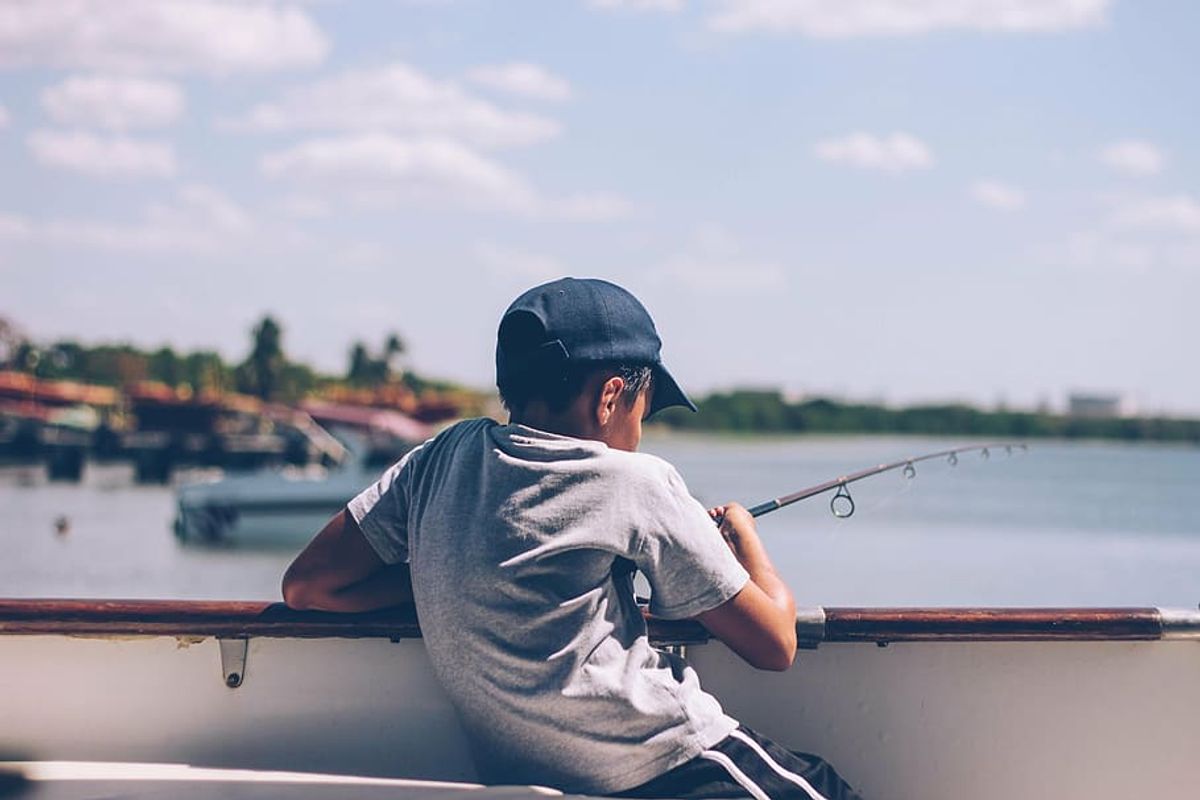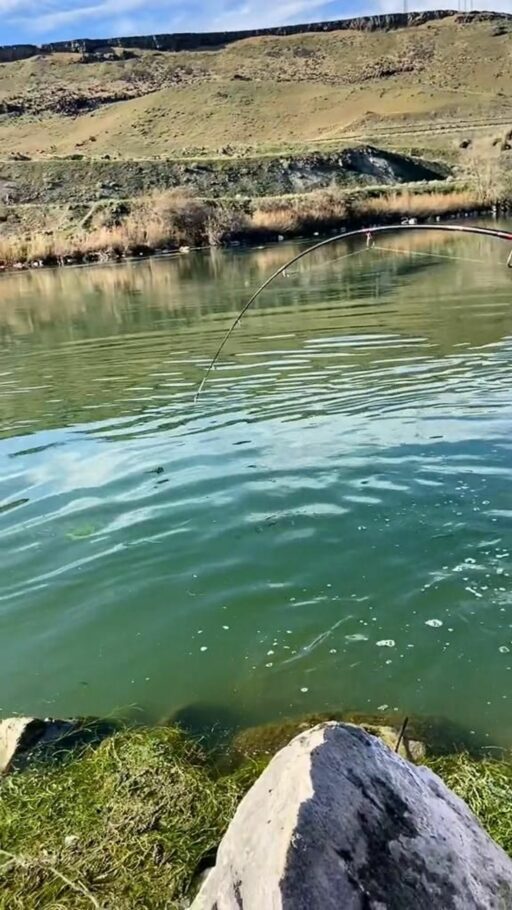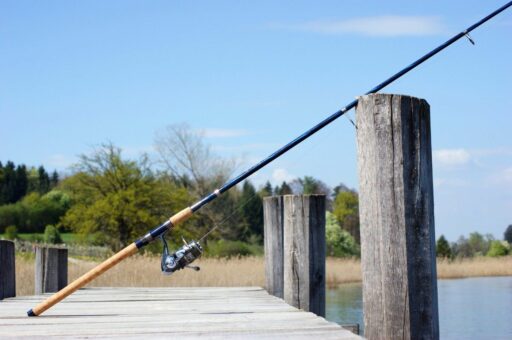In the quest for mastering the art of bottom fishing, anglers often ponder whether a casting rod can be employed effectively for sinking the bait. This article delves into the intricacies of bottom fishing, from bait selection to adapting to ever-changing underwater conditions. It explores the finesse required to entice fish out of their cover, the dominance of the drop shot rig, and the precise casting techniques necessary when using a casting rod. Through a combination of expert tips and personal experience, we aim to enhance your bottom fishing strategy and answer the pivotal question of the suitability of a casting rod for this method.
Key Takeaways
- A casting rod can be effectively used for bottom fishing, with precise casting playing a critical role in targeting fish that require a direct hit to trigger a reaction.
- Bait selection is paramount, with drop shots, shaky heads, and jigs being top choices for bottom fishing, especially when paired with weedless hooks to navigate brushy terrains.
- Techniques such as using moving baits to draw fish out of cover, followed by a finesse bottom bait presentation, can significantly increase catch rates.
- The drop shot rig is a finesse tactic that has proven to be highly effective for bass fishing, demanding patience and meticulous rigging for maximum effectiveness.
- Adapting to changing conditions is crucial in bottom fishing, requiring anglers to read water conditions, adjust tactics daily, and understand fish psychology to trigger bites.
The Art of Bait Selection for Bottom Fishing

Understanding the Role of Finesse Tackle
In the realm of bottom fishing, finesse tackle plays a pivotal role in enticing fish to bite, especially when they are less aggressive. The subtlety of finesse tackle can be the difference between a successful day on the water and coming home empty-handed. It’s not just about using lighter lines and smaller baits; it’s about the nuanced approach to presenting those baits in a way that appears natural and irresistible to fish.
- Precise casting is crucial when using finesse tackle, as it often requires placing the bait directly in the fish’s line of sight.
- Bait selection is another key factor, with choices needing to match the fish’s current diet or mood.
- Multiple presentations may be necessary to convince a wary fish to strike, making the versatility of finesse tackle invaluable.
Finesse tackle allows anglers to adapt to the fish’s behavior, offering multiple presentations and increasing the chances of a catch. This approach is essential for a guide to successful bottom fishing, providing tips on bait, rigs, and locations while helping to avoid common mistakes.
Top Picks for Bottom Baits: Drop Shot, Shaky Head, and Jig
When it comes to bottom fishing, the choice of bait can make a significant difference in your success rate. Drop shot rigs, often paired with minnow-imitating lures like the Gary Yamamoto Shad Shape Worm or the Berkley PowerBait MaxScent Flat Worm, are a top pick for many anglers. These baits excel in mimicking the natural prey of bass and can lead to impressive catches.
-
Shaky head rigs offer a different approach, providing a subtle presentation that can entice wary fish. The finesse of a shaky head can be particularly effective in clear water conditions where fish are more discerning.
-
Jigs, on the other hand, are versatile and can be used in a variety of environments. Whether you’re fishing around brush or in open water, a well-placed jig can be irresistible to bass.
Balancing the weight and action of your bait is crucial for bottom fishing. A ball-shaped drop shot weight, for example, is ideal for maintaining bait position in areas with pea gravel or mud.
Remember, the key to bottom fishing is not just the bait itself, but how you present it. Adapting your technique to the conditions and the behavior of the fish is what ultimately leads to a successful outing.
The Importance of Weedless Hooks in Brushy Terrains
When navigating the dense and snag-prone environments of brushy terrains, the use of weedless hooks becomes paramount. The right hook not only increases your chances of a catch but also preserves your gear from damage. Weedless hooks are designed to glide through vegetation, minimizing the risk of getting caught up in underwater obstacles.
- Gamakatsu G-finesse Worm Hook: Ideal for brushy conditions, allowing for snag-free fishing.
- Strike King Filler Worm: Effective in enticing fish while reducing hang-ups.
- 6-inch Roboworm: A versatile lure that pairs well with weedless hooks for a successful catch.
By employing weedless hooks in combination with the appropriate lures, anglers can effectively target fish hidden in the most challenging environments. This approach not only enhances the fishing experience but also contributes to a more sustainable practice by reducing the loss of tackle.
Techniques for Calling Fish Out of Cover

Targeting Bass at the Top of Brush Piles
When bass position themselves at the top of brush piles, they exhibit a more aggressive behavior, readily chasing down a bait. A successful approach often involves a first cast with dynamic lures like a jerkbait or a jig and minnow. This initial cast can be a decisive move to entice a strike from these opportunistic predators.
In scenarios where bass are lurking deeper within the brush, finesse becomes crucial. A subtle presentation with a finesse style bottom bait can be the key to triggering a bite from these more elusive fish.
Understanding the mood and positioning of the fish within the brush is essential. Adapting your strategy to these conditions can mean the difference between a rewarding day and a challenging one. Employing a one-two punch—first drawing them out with a moving bait, then enticing them with a bottom bait—can significantly enhance your success rate.
Using Moving Baits to Lure Fish into Open Water
Moving baits are a dynamic tool for drawing bass out of their cover and into open water where they are more susceptible to striking. A jig and minnow combination is particularly effective, as it can quickly present the bait to fish, encouraging them to leave their safe zones. Once the fish are engaged, switching to a slower presentation, like a jerkbait, can coax them into committing to the bait.
When employing moving baits, it’s crucial to adapt to the fish’s behavior and the conditions of the day. What works one day may not be as effective the next, as fish patterns can shift unpredictably.
Understanding the fish’s reaction to different presentations is key. For instance, if fish follow the bait without striking, it may be necessary to alter the retrieval speed or switch to a different lure. Here’s a quick guide on selecting the right moving bait:
- Jig and Minnow: Best for clear water and efficient bait presentation.
- Jerkbait: Ideal for slower presentations to make fish commit.
- Glide Bait: Useful for mimicking the movement of baitfish.
Remember, precise casting is vital to ensure the bait lands exactly where the fish are likely to react. This technique not only increases the chances of a strike but also allows for multiple presentations to the same fish, enhancing the likelihood of a successful catch.
Switching to Finesse Baits for the Subtle Bite
When the aggressive tactics fail to entice the fish, switching to finesse baits can be the key to success. These baits are designed to mimic the natural movement and appearance of prey, making them irresistible to fish that are not actively feeding. Finesse baits require a delicate touch and a bit of patience, but the results can be highly rewarding.
- Drop Shot Rig: Ideal for precise positioning near finicky fish.
- Shaky Head: Perfect for maintaining contact with the bottom and tempting reluctant biters.
- Lightweight Jigs: Effective for a slow, enticing fall that can trigger strikes from fish holding tight to cover.
The right finesse bait can turn a slow day into a productive one, subtly coaxing fish into biting when nothing else will. It’s about presenting an easy meal that’s too tempting for the fish to ignore, even when they’re not in an aggressive mood.
Remember, the goal is not to overpower the fish but to present a bait that will naturally drift into their line of sight, encouraging a bite out of curiosity or hunger. This approach often requires lighter line, smaller hooks, and a gentle presentation to avoid spooking the fish.
Mastering the Drop Shot Rig

Why the Drop Shot Dominates in Bass Fishing
The drop shot rig has revolutionized bass fishing, offering a unique presentation that often proves irresistible to bass. Its versatility across different seasons and conditions makes it a dominant force in the bass fishing world. The rig’s effectiveness is not just anecdotal; many anglers have consistently reported success with the drop shot in various waters nationwide.
The drop shot rig’s finesse approach is particularly effective when bass are less aggressive. The subtle movement of the bait, suspended off the bottom, can entice even the most finicky fish to strike.
Here are a few reasons why the drop shot rig is so effective:
- It allows for precise bait placement, keeping the lure in the strike zone longer.
- The rig is less likely to snag, making it ideal for fishing in areas with heavy cover or rocky bottoms.
- Anglers can easily adjust the weight and distance from the bait to adapt to changing depths and fish preferences.
Understanding the nuances of this technique is crucial for any angler looking to improve their catch rate. Patience and a methodical approach are key, as the drop shot often requires a slower, more deliberate presentation compared to other techniques.
Rigging Tips for Maximum Effectiveness
To achieve maximum effectiveness with a drop shot rig, precision in rigging is just as crucial as the finesse of the presentation. Thread your hook 8 to 12 inches above the bottom of your fluorocarbon leader, ensuring that the distance is appropriate for the depth you’re targeting. A Palomar knot is recommended for securing the hook, as it provides a strong and reliable connection.
When rigging, it’s essential to maintain a streamlined setup to minimize snags and maximize bait action. This means paying close attention to the details of your rig, from the hook size to the weight placement.
Here are some additional tips to consider:
- Use a light wire hook to allow your bait to move naturally in the water.
- Opt for a slender weight to reduce drag and maintain a vertical presentation.
- Regularly check and adjust your leader length based on the behavior of the fish and the structure of the bottom.
By adhering to these rigging principles, you can significantly enhance your chances of enticing a bite, especially when dealing with wary fish.
Patience and Precision: Working the Drop Shot
Mastering the drop shot rig is a game of patience and precision. The subtle presentation and slow movements are key to enticing wary bass. It’s not just about waiting for the bite; it’s about understanding the nuances of the rig and how it interacts with the water and the fish.
The drop shot rig shines in its ability to present baits in a natural and appealing manner. Its effectiveness lies in the finesse of the angler’s touch and the strategic placement of the bait.
When working the drop shot, consider the following points:
- Maintain a tight line to detect subtle bites.
- Use slight rod movements to impart life-like action to the bait.
- Be mindful of the weight and hook size to ensure proper bait presentation.
Remember, the drop shot can deceive even the most cautious of bass, but it requires a thoughtful approach. Each cast is an opportunity to refine your technique and learn from the water’s feedback.
Casting Rod Considerations for Bottom Fishing

The Need for Precise Casts with a Casting Rod
When it comes to bottom fishing, the precision of your cast can make or break your success. Precise casts are extremely important, especially when targeting specific structures or fish. A casting rod allows for greater accuracy and control, which is essential when you need to ‘hit them on the head’ to elicit a reaction.
The right combination of rod length, action, and power is crucial for finesse techniques like the drop shot. A rod that’s about 7′ long with a fast or extra-fast action and medium-light to medium power is ideal. This setup provides the necessary bend for light line tactics while maintaining enough backbone for a solid hookset.
Here’s a quick guide to selecting a casting rod for bottom fishing:
- Length: Around 7 feet for optimal control
- Action: Fast to extra-fast for responsiveness
- Power: Medium-light to medium to balance sensitivity and strength
Remember, while the rod is vital, pairing it with the right reel enhances your bottom fishing game. A reel with a high-quality drag system, like the Daiwa Ballistic MQ LT 2500D, ensures smoothness and reliability when fighting big bass on light lines.
Balancing Weight and Sensitivity for Effective Bottom Fishing
When bottom fishing, the angler must strike a delicate balance between the weight of the bait and the sensitivity of the rod. The right gear allows for precise control over the bait’s depth and movement, ensuring that it reaches the desired fishing zone while maintaining enough sensitivity to detect subtle bites. This balance is critical in various conditions, from shallow waters to the deep cover of grass, brush, and rock.
- The Lighter Approach: Ideal for shallow or cold waters, where a slow presentation is key. A lighter bait ensures control over running depth.
- Mid-Range Mastery: A medium weight bait is perfect for moderate depths, providing a balance between sinking capability and adjustability.
- Going Heavy: In deeper waters or during aggressive feeding periods, heavier baits get to depth quickly and maintain position during fast retrieves.
Adapting your gear to the fishing conditions is not just about changing baits; it’s about understanding how weight and sensitivity work together to make your presentation irresistible to fish. The use of stick worms and Senko baits, for example, can be highly effective for bass fishing, but requires the right gear selection and bait usage to truly succeed.
Adapting Casting Techniques for Deep Cover Environments
When targeting bass in deep cover environments, the ability to adapt your casting techniques is crucial. Precise casts are essential as they can be the difference between spooking the fish and enticing a strike. In these situations, the angler must often ‘hit them on the head’ to elicit a reaction, requiring not just skill but also a thorough understanding of the underwater terrain.
- Understand the structure: boulders, laydowns, ledges.
- Adjust the weight for sink rate and bait presentation.
- Practice casting accuracy to target specific areas.
Adapting your casting technique to the environment is more than just skill; it’s about creating the perfect storm of lure presentation, weight balance, and precision that makes bass unable to resist the bait.
The drop shot technique, with its subtle presentation just above the bottom, mimics the natural feeding cycle of bass and is particularly effective in these scenarios. It’s not just about the cast but also about the patience and the strategic placement of the bait. By mastering these elements, you can significantly increase your chances of success in deep cover fishing.
Adapting to Changing Conditions and Making Fish Eat

Reading Water Conditions and Fish Behavior
Understanding and adapting to water conditions and fish behavior is crucial for bottom fishing success. Fish positioning around brush, for instance, can indicate their readiness to strike. When bass are suspended higher in the water column, they may be more willing to feed, guiding your choice of lure and presentation.
Recognizing subtle changes in fish behavior can turn a slow day into a productive one. It’s about interpreting the signs fish give us and responding with the right tactics.
Here are some tips for successful saltwater fishing that also apply to freshwater scenarios:
- Use heavy microfilament for big fish
- Set the hook timely
- Know marine charts
- Use noisy lures
- Handle fish properly
- Choose the right gear
Remember, fishing is not just about patience; it’s about hard work and knowledge. By reading the conditions and understanding fish behavior, you can adjust your approach to make the fish bite, even when they’re not actively feeding.
Adjusting Tactics from Day to Day
Adapting your approach to bottom fishing is crucial as conditions and fish behavior can change dramatically from one day to the next. Boldly recognizing when to switch tactics is the key to consistent success. For instance, if fish are active and aggressively hitting a jig and minnow on the first day, they might completely ignore the same setup on the following day. This calls for a strategic shift, perhaps to a more finesse technique like a drop shot, to coax the fish into biting.
It’s essential to be versatile and ready to modify your approach based on the fish’s response. If they’re not responding to your initial offering, don’t hesitate to experiment with different baits and presentations until you find what works.
Here’s a quick guide to help you adjust your tactics:
- Start with your go-to bait based on the water clarity and temperature.
- If the fish are unresponsive, switch to a slower, more subtle presentation.
- Pay close attention to how the fish are positioned; if they’re deep in cover, finesse baits might be more effective.
- Keep a mental note or a log of what works and what doesn’t, as this can inform your strategy for future outings.
The Psychology of Triggering Strikes in Stubborn Fish
Mastering the art of enticing stubborn fish to strike requires a blend of skill, patience, and understanding fish behavior. Adapting your approach to the mood of the fish is crucial, especially when dealing with those that are reluctant to bite. A one-two punch technique, which involves calling fish out with a moving bait and then enticing them with a bottom bait, can be particularly effective.
When fish follow your bait without committing, it’s time to switch up your tactics. Employing a consistent retrieval speed and occasional pauses can provoke reaction strikes, even from the most stubborn fish.
Understanding the nuances of fish behavior and how they’re positioned in cover is key. Here are some tips to increase your chances of success:
- Use a moving bait to draw fish out of cover.
- Switch to a finesse bottom bait to trigger the bite.
- Make precise casts to target fish effectively.
- Adjust your retrieval speed and include pauses.
Remember, the right bait selection and presentation can make all the difference when trying to coax a bite from fish that seem uncatchable.
Conclusion
In conclusion, mastering bottom fishing with a casting rod is not only possible but can be highly effective when done correctly. The key lies in understanding the behavior of the fish, selecting the right bait, and executing precise casts. Techniques such as drop shots, shaky heads, and jigs, when paired with a casting rod, can entice even the most stubborn fish from their deep-water hideouts. By combining finesse tactics with the strength and precision of a casting rod, anglers can increase their chances of a successful catch. Remember to be patient, maintain line tension, and be ready for those subtle bites that could lead to a trophy fish. Whether you’re fishing in clear waters or around dense cover, a casting rod can be your ally in sinking the bait effectively and reeling in those elusive bass.
Frequently Asked Questions
Can I use a casting rod for sinking bait in bottom fishing?
Yes, you can use a casting rod for bottom fishing with sinking bait. Precise casting is crucial for this technique, especially when targeting fish around cover.
What are the best baits for bottom fishing?
Some of the top picks for bottom fishing include drop shots, shaky heads, and jigs. These lures are effective for catching fish on the bottom and can be used to lure fish out of thick brush.
Is it possible to catch big bass with a drop shot rig?
Absolutely, while the drop shot rig is a finesse technique often associated with catching smaller fish, it can also be highly effective for catching big bass when used correctly.
How do I make fish bite when they are deep in cover?
To coax fish out of deep cover, use moving baits to draw them into open water, then follow up with a finesse style bottom bait. This one-two punch can be very effective.
How does bait selection impact success in bottom fishing?
Bait selection is crucial in bottom fishing. The right bait can greatly increase your chances of a catch, especially when paired with the correct technique and presentation.
What adjustments should I make if fish aren’t biting the usual tactics?
If fish aren’t responding to your usual methods, it’s important to read the water conditions, adjust your tactics, and understand the psychology of triggering strikes in stubborn fish.




